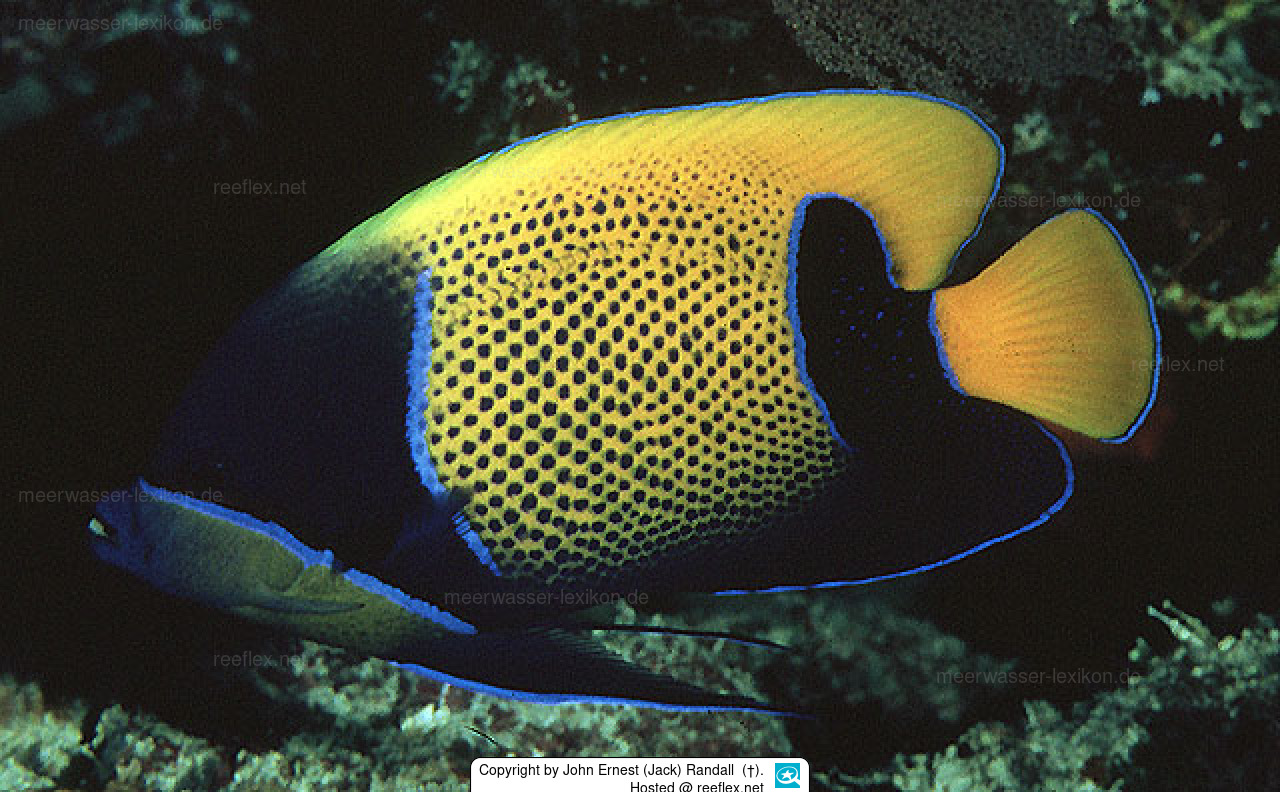Pomacanthus navarchus Blue Girdled Angel, Blue-girdled Angelfish, Bluegirdled Angelfish, Blue Girdled Angelfish, Majestic Angelfish, Young Blue Girdled Angel
Pomacanthus navarchusis commonly referred to as Blue Girdled Angel, Blue-girdled Angelfish, Bluegirdled Angelfish, Blue Girdled Angelfish, Majestic Angelfish, Young Blue Girdled Angel. Difficulty in the aquarium: Only for advanced aquarists. A aquarium size of at least 1000 Liter is recommended. Toxicity: Toxic hazard unknown.
Info
Pomacanthus navarchus (Cuvier, 1831)
Pomacanthus navarchus also known as the Blue Girdled Angelfish or Majestic Angelfish is found throughout the Indo-Australian archipelago, they are most common in New Guinea and the Great Barrier Reef. Pomacanthus navarchus is commonly found in areas of heavy coral growth in deeps between 1 – 30 m.
The Blue Girdled Angelfish has yellow scales with blue margins and a dark blue band, or girdle, that covers the face and extends backward. The girdle is highlighted with neon blue margins. A mature Blue Girdled Angel reached a size in the wild between 18 – 26 cm.
While somewhat shy, Pomacanthus navarchus is one of the easier angelfish to keep once it has been successfully acclimated. They may show aggression toward other fish, particularly Angels. The Blue Girdled Angelfish is not a good reef dweller, being prone to nip at stony and soft corals (sessile invertebrates) and clam mantles. It generally will not harm small-polyped stony corals and somewhat noxious soft corals.
Synonyms:
Euxiphipops navarchus (Cuvier, 1831)
Holacanthus navarchus Cuvier, 1831
am 27.12.21#16
Habe seit einiger Zeit eine Nachzucht bei mir im Becken. Anfangs war er doch sehr scheu, lag sicherlich daran das meine Doktorfische ihm gezeigt haben das sie hier der Herren im Hau sind. Mittlerweile sind die Fronten geklärt und alle Schwimmen ruhig zusammen durchs Becken. Gelegentlich zupft er tatsächlich an bestimmten SPS, aber nichts ernstes. Er selbst fängt überhaupt kein Stress an.
Gefressen wird alles von Nori-Algen bis hin zur Granulat Futter.
Wichtig bei Kaiserfischen ist generell, das man ihnen eine abwechslungsreichen Aufbau und Speiseplan bietet. Dann zupfen sie aus meiner Erfahrung heraus nicht so oft/ viel an Blumentieren.
am 10.04.19#15
Habe das Juwel nun seit 6 Jahren und kann fast nur gutes berichten,knabert zwar ab und zu an meinen Montiporas und Xenias ,ansonsten hat er halt nur 2 Putzegarnelen zerlegt, das zum negativen .Futtert alles was ins Maul passt ansonsten ein toller Fisch der sich mit seinen Nachbarn einmal eingewöhnt gut versteht und mit seiner Farbenpracht mein "Riff"bereichert.
Wir möchten ihn nicht mehr missen und hoffen das er wirklich 30 Jahre alt wird.
am 17.04.17#14
Absolut robust und knuffig, ein super Fisch, allerdings geht er an Korallen und hat sogar eine Teppichanemone zerlegt (gezielt den Fuss angefressen, dann ist sie verendet). Er ist bezüglich der Korallenfresserei meines Erachtens anderen Kaisern ebenbürtig. Friedlich gegenüber anderen Fischen....







 Dr. John Ernest (Jack) Randall (†), Hawaii
Dr. John Ernest (Jack) Randall (†), Hawaii

































